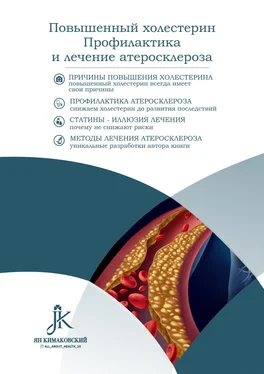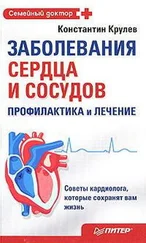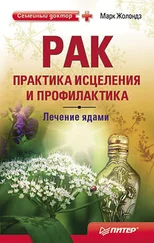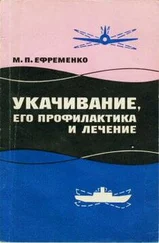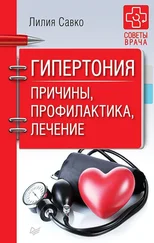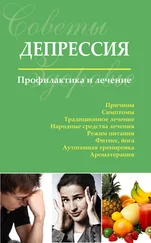С моей точки зрения, грозную болезнь всегда лучше предотвратить, чем лечить. А если уже имеется необходимость лечиться, то начинать лечение нужно как можно раньше, не игнорируя причин, которые зачастую кроются в нашем образе жизни. И хоть напрямую «наесть» повышение холестерина и тем более, атеросклероз, невозможно, но всё же наш образ питания и даже эмоциональные привычки, сильно влияют на наш гормональный фон, пищеварение, обмен веществ, и как следствие – на сердечно-сосудистую систему. Организм человека это цельная система и подход просто обязан быть комплексным! Очень надеюсь, что каждый прочитавший эту книгу, извлечёт из неё для себя максимум пользы. Желаю всем крепкого здоровья и успехов на пути к нему!
Ваш, Ян Викторович Кимаковский, автор блога ALL_about_health_10
1. «Gut Microbiota-Dependent Trimethylamine-N-oxide and Serum Biomarkers in Patients with T2DM and Advanced CKD» by Mohammed A. I. Al-Obaide, Ruchi Singh, Palika Datta, Kathy A. Rewers-Felkins, Maria V. Salguero, Ibtisam Al-Obaidi, Kameswara Rao Kottapalli and Tetyana L. Vasylyeva.
2. Zeneng Wang, Elizabeth Klipfell, Brian J. Bennett, Robert Koeth, Bruce S. Levison, et. al.. (2011). Gut flora metabolism of phosphatidylcholine promotes cardiovascular disease. Nature. 472, 57–63;
3. D. Mozaffarian, E. J. Benjamin, A. S. Go et al., «Heart disease and stroke statistics – 2016 update: a report from the American Heart Association,» Circulation, vol. 133, no. 4, article e38, 2016.
4. R. Ross, «Cell biology of atherosclerosis,» Annual Review of Physiology, vol. 57, pp. 791–804, 1995.
5. U. Förstermann, N. Xia, and H. Li, «Roles of vascular oxidative stress and nitric oxide in the pathogenesis of atherosclerosis,» Circulation Research, vol. 120, no. 4, pp. 713–735, 2017.
6. M. A. Gimbrone Jr. and G. Garcia-Cardena, «Endothelial cell dysfunction and the pathobiology of atherosclerosis,» Circulation Research, vol. 118, no. 4, pp. 620–636, 2016.
7. Z. Wang, E. Klipfell, B. J. Bennett et al., «Gut flora metabolism of phosphatidylcholine promotes cardiovascular disease,» Nature, vol. 472, no. 7341, pp. 57–63, 2011.
8. N. Kamada, S. U. Seo, G. Y. Chen, and G. Núñez, «Role of the gut microbiota in immunity and inflammatory disease,» Nature Reviews Immunology, vol. 13, no. 5, pp. 321–335, 2013.
9. T. Kamo, H. Akazawa, W. Suda et al., «Dysbiosis and compositional alterations with aging in the gut microbiota of patients with heart failure,» PLoS One, vol. 12, no. 3, article e0174099, 2017.
10. W. H. Tang, T. Kitai, and S. L. Hazen, «Gut microbiota in cardiovascular health and disease,» Circulation Research, vol. 120, no. 7, pp. 1183–1196, 2017.
11. Z. Liu, J. Li, H. Liu et al., «The intestinal microbiota associated with cardiac valve calcification differs from that of coronary artery disease,» Atherosclerosis, vol. 284, pp. 121–128, 2019.
12. F. H. Karlsson, F. Fåk, I. Nookaew et al., «Symptomatic atherosclerosis is associated with an altered gut metagenome,» Nature Communications, vol. 3, no. 1, article 1245, 2012.
13. H. Liu, C. Yang, Y. Jing, Z. Li, W. Zhong, and G. Li, «Ability of lactic acid bacteria isolated from mink to remove cholesterol: in vitro and in vivo studies,» Canadian Journal of Microbiology, vol. 59, no. 8, pp. 563-569, 2013.
14. J. Li, S. Lin, P. M. Vanhoutte, C. W. Woo, and A. Xu, «Akkermansia muciniphilaprotects against atherosclerosis by preventing metabolic endotoxemia-induced inflammation in ApoE-/– mice,» Circulation, vol. 133, no. 24, pp. 2434-2446, 2016.
15. Z. Jie, H. Xia, S. L. Zhong et al., «The gut microbiome in atherosclerotic cardiovascular disease,» Nature Communications, vol. 8, no. 1, article 845, 2017.
16. W. H. Tang, Z. Wang, D. J. Kennedy et al., «Gut microbiota-dependent trimethylamine N-oxide (TMAO) pathway contributes to both development of renal insufficiency and mortality risk in chronic kidney disease,» Circulation Research, vol. 116, no. 3, pp. 448–455, 2015.
17. C. E. Cho and M. A. Caudill, «Trimethylamine-N-Oxide: Friend, Foe, or Simply Caught in the Cross-Fire?» Trends in Endocrinology and Metabolism, vol. 28, no. 2, pp. 121-130, 2017.
18. R. A. Koeth, B. S. Levison, M. K. Culley et al., «γ-Butyrobetaine is a proatherogenic intermediate in gut microbial metabolism of L-carnitine to TMAO,» Cell Metabolism, vol. 20, no. 5, pp. 799–812, 2014.
19. J. Chhibber-Goel, V. Singhal, N. Parakh, B. Bhargava, and A. Sharma, «The metabolite trimethylamine-N-oxide is an emergent biomarker of human health,» Current Medicinal Chemistry, vol. 24, no. 36, pp. 3942–3953, 2017.
20. W. H. Tang, Z. Wang, B. S. Levison et al., «Intestinal microbial metabolism of phosphatidylcholine and cardiovascular risk,» The New England Journal of Medicine, vol. 368, no. 17, pp. 1575–1584, 2013.
21. J. M. Brown and S. L. Hazen, «The gut microbial endocrine organ: bacterially derived signals driving cardiometabolic diseases,» Annual Review of Medicine, vol. 66, no. 1, pp. 343–359, 2015.
22. R. A. Koeth, Z. Wang, B. S. Levison et al., «Intestinal microbiota metabolism of L-carnitine, a nutrient in red meat, promotes atherosclerosis,» Nature Medicine, vol. 19, no. 5, pp. 576–585, 2013.
23. W. Zhu, J. C. Gregory, E. Org et al., «Gut microbial metabolite TMAO enhances platelet hyperreactivity and thrombosis risk,» Cell, vol. 165, no. 1, pp. 111–124, 2016.
24. K. A. Romano, E. I. Vivas, D. Amador-Noguez, and F. E. Rey, «Intestinal microbiota composition modulates choline bioavailability from diet and accumulation of the proatherogenic metabolite trimethylamine-N-oxide,» mBio, vol. 6, no. 2, article e02481, 2015.
25. B. J. Bennett, T. Q. A. Vallim, Z. Wang et al., «Trimethylamine-n-oxide, a metabolite associated with atherosclerosis, exhibits complex genetic and dietary regulation,» Cell Metabolism, vol. 17, no. 1, pp. 49–60, 2013.
26. X. Sun, X. Jiao, Y. Ma et al., «Trimethylamine N-oxide induces inflammation and endothelial dysfunction in human umbilical vein endothelial cells via activating ROS-TXNIP-NLRP3 inflammasome,» Biochemical and Biophysical Research Communications, vol. 481, no. 1–2, pp. 63–70, 2016.
27. K. M. Boini, T. Hussain, P. L. Li, and S. S. Koka, «Trimethylamine-N-oxide instigates NLRP3 inflammasome activation and endothelial dysfunction,» Cellular Physiology and Biochemistry, vol. 44, no. 1, pp. 152–162, 2018.
28. Kilmer S. McCully, Robert B. Wilson. (1975). Homocysteine theory of arteriosclerosis. Atherosclerosis. 22, 215–227;
29. Чаллем Дж. и Долби В. (1999). Гомоцистеин: новый «холестерол». Изд-во «Крон-Пресс»;
30. Баранова Е. И., Большакова О. О. (2004). Клиническое значение гомоцистеинемии (обзор литературы). Артериальная гипертензия. 10;
31. D’Angelo A. and Selhub J. (1997). Homocysteine and thrombotic disease. Blood. 1, 1-11;
32. Добронравов В. А., Голубев Р. В. (2004). Гипергомоцистеинемия – фактор риска сердечно-сосудистых поражений у диализных больных и в общей популяции. Нефрология. 8, 44–49;
Читать дальше
